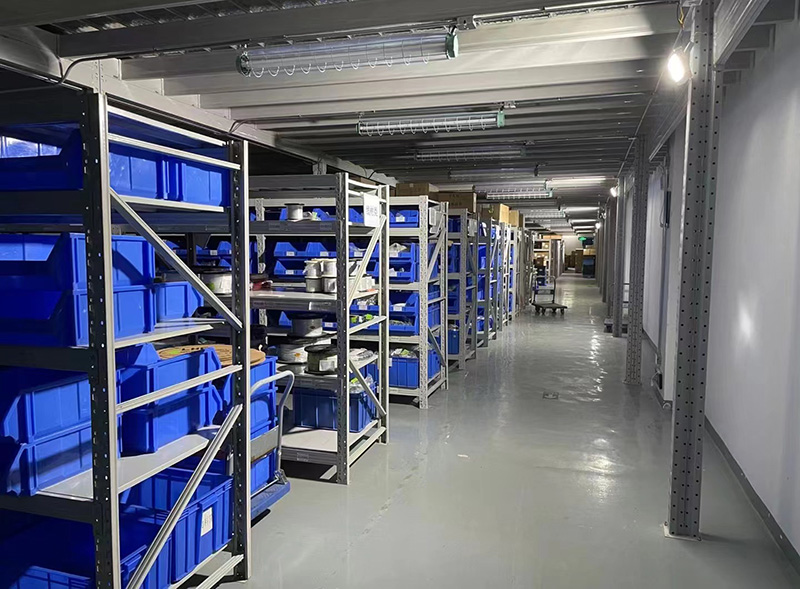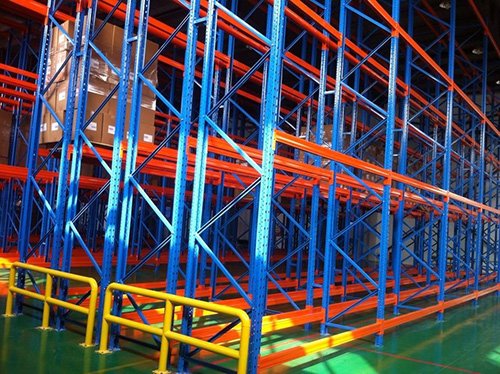In the high-stakes world of frozen and refrigerated logistics, the backbone of efficient, safe, and cost-effective operations lies in the cold storage racking system. Unlike standard warehouse racking, these systems face the brutal assault of sub-zero temperatures, high humidity, condensation, and demanding operational cycles. Selecting and maintaining the right cold storage racking system isn't just about storage; it's about preserving product integrity, maximizing throughput, ensuring worker safety, and protecting a significant capital investment in a uniquely challenging environment. This comprehensive guide dives deep into five crucial aspects you must consider.

1. Material Science & Durability: Defying the Deep Freeze
The core challenge for any cold storage racking system is the environment itself. Temperatures plunging to -30°F (-34°C) or lower fundamentally alter material properties. Standard warehouse steel becomes brittle, significantly increasing the risk of catastrophic failure under load or impact.
Specialized Steel Alloys: Reputable manufacturers use specific low-temperature steel grades (often conforming to standards like ASTM A573 or similar international equivalents). These alloys maintain crucial ductility and toughness far below freezing, ensuring structural integrity even in extreme cold.
Advanced Protective Coatings: Corrosion is a relentless enemy in cold stores due to constant condensation and aggressive defrost cycles. Standard powder coatings often fail, leading to rust and degradation. High-performance cold storage racking systems utilize:
Hot-Dip Galvanization (HDG): Provides a thick, durable zinc layer offering superior cathodic protection. The gold standard for harsh environments.
Specialized Epoxy Coatings: Formulated for low-temperature adhesion and flexibility, providing an additional barrier against moisture and chemical exposure (like cleaning agents).
Component Design: Critical connection points (beam end connectors, base plates, frame connectors) are often over-engineered or feature specific designs to mitigate stress concentration points, which are more vulnerable in brittle conditions. Reinforced uprights and heavier-gauge steel are common.
2. Load Capacity & Structural Design: Calculating for the Cold
Load capacity ratings on a standard warehouse racking tag don't directly translate to the freezer. The physics of cold significantly impact performance.
Derating for Temperature: Steel's yield strength increases slightly in cold, but its fracture toughness decreases dramatically. Engineering standards (like RMI - ANSI MH16.1) mandate significant derating factors for cold storage racking systems. A rack rated for 5,000 lbs per beam level in ambient conditions might only be rated for 3,500 lbs or less in deep freeze. Never ignore this critical deration.
Thermal Contraction: Steel contracts significantly as temperatures drop. A 30-foot rack frame can shrink by over half an inch moving from room temperature to -20°F. The cold storage racking system design must accommodate this movement:
Slotted Holes: Beam connectors and base plates feature elongated slots to allow for movement without inducing dangerous stresses.
Expansion Joints: In very long runs of racking, physical expansion joints are incorporated to prevent buckling or distortion.
Dynamic Loads & Impact: Cold environments make materials (including forklift tires and flooring) harder, increasing the force of impacts. The cold storage racking system must be designed to withstand these higher potential impact loads, often requiring stronger bracing, guard rails, and robust column protectors.

3. Operational Efficiency & Throughput: Maximizing Flow in the Freezer
Time is money, and time spent inside a freezer is expensive and uncomfortable for workers. The cold storage racking system must be designed to optimize product flow and minimize time-on-task.
Aisle Width Optimization: Balancing storage density with maneuverability is key. Narrow Aisle (NA) or Very Narrow Aisle (VNA) configurations using specialized cold storage racking systems (like pallet shuttle or mobile racking) coupled with appropriate forklifts can dramatically increase storage capacity while maintaining good throughput.
Selective vs. Dense Storage: The choice depends on SKU profile and turnover:
Selective Pallet Rack: Offers direct access to every pallet, ideal for high-SKU count, high-turnover goods. Essential for FIFO (First-In, First-Out).
Dense Storage Systems (Drive-In/Drive-Thru, Pallet Shuttle, Push Back, Mobile Racking): Maximize cubic space utilization, perfect for lower turnover, high-volume SKUs, or batch storage. Require specialized cold storage racking system designs and often specific MHE.
Integration with MHE (Material Handling Equipment): The racking design must be compatible with the specific forklifts (reach trucks, turret trucks, sideloaders) used in the cold store. Clearance heights, turning radii, and mast heights dictate beam levels and aisle widths.
Accessibility & Ergonomics: Minimizing unnecessary travel and simplifying put-away/picking paths reduces worker exposure. Clear labeling and intuitive layout within the cold storage racking system are crucial.
4. Installation Planning & Execution: Building in the Cold
Installing a cold storage racking system within an operational freezer presents unique logistical and technical hurdles.
Pre-Assembly vs. In-Situ: Whenever possible, major components (upright frames) are assembled in ambient conditions outside the freezer. This is safer, faster, and ensures better quality control. Final assembly and connection happen inside.
Thermal Management During Install: Bringing large amounts of ambient-temperature steel into a cold room causes significant condensation and fogging, creating slippery conditions and visibility issues. Staging materials in a "temperizing" chamber (around 40°F) before final installation can mitigate this.
Worker Safety & Productivity: Extreme cold drastically reduces manual dexterity, increases fatigue, and necessitates frequent breaks. Installation timelines are inherently longer than in ambient warehouses. Proper cold-weather PPE and strict safety protocols are non-negotiable.
Tolerance Management: Precise leveling and alignment are even more critical than in ambient warehouses due to thermal movement. The floor must be perfectly level, and installers must account for the rack's final "cold" position, ensuring clearances remain safe after contraction.
Phased Implementation: For retrofits or expansions within live cold storage, meticulous planning to minimize disruption to ongoing operations is essential. This often involves phased installation and temporary storage solutions.
5. Safety Features & Maintenance: Preventing Catastrophe in Critical Conditions
Safety in a cold storage environment is paramount. Reduced visibility (fogging), slippery floors, bulky PPE, and the inherent hazards of racking are amplified. The cold storage racking system must incorporate robust safety features and a rigorous maintenance regime.
Enhanced Impact Protection:
Heavy-Duty Column Protectors: Significantly thicker and taller than standard protectors, often made from resilient, cold-tolerant polymers, to absorb higher-energy impacts common on hard, cold floors.
Aisle Guard Barriers: Installed at the end of each aisle and often at higher levels to prevent pallets from being accidentally pushed into the aisle.
Pallet Supports & Wire Mesh Decking: Prevent pallets or products from dislodging and falling, especially important where ice buildup might occur on pallets.
Anti-Slip Components: Beam end caps and safety pins often feature textured or high-friction surfaces to improve grip for workers performing manual tasks at height (like installing beam locks).
Regular Structural Integrity Inspections: More frequent and thorough inspections are mandatory in cold storage. Trained inspectors look for:
Corrosion: Especially at weld points, base plates, and areas where coatings might be damaged.
Cracks or Deformation: Signs of overloading, impact damage, or material fatigue exacerbated by cold.
Loose or Damaged Connectors: Bolts, beam locks, and safety pins can work loose or become brittle.
Alignment Issues: Ensuring frames remain plumb and beams level after thermal cycles.
Strict Load Management: Enforcing adherence to derated load capacities and proper pallet placement is non-negotiable. Warehouse Management Systems (WMS) should be configured with the correct cold storage capacities.
Clear Signage & Markings: Highly visible capacity signs, aisle markings, and safety warnings are essential due to potentially reduced visibility.
A cold storage racking system is far more than just shelves in a freezer. It's a sophisticated, engineered structure designed to withstand one of the harshest industrial environments while enabling efficient, safe, and reliable storage and retrieval of valuable temperature-sensitive goods. Ignoring the unique demands of cold storage – from specialized materials and derated capacities to installation logistics and enhanced safety – can lead to disastrous consequences: structural failure, product loss, operational downtime, and serious worker injuries.
By deeply understanding and prioritizing these five critical factors – Material Durability, Load Capacity & Structural Design, Operational Efficiency, Installation Planning, and Safety & Maintenance – businesses can make informed decisions. Partnering with experienced cold storage racking system manufacturers and installers who possess proven expertise in sub-zero environments is crucial. This strategic investment ensures not only the protection of your inventory but also the safety of your workforce, the efficiency of your operations, and the long-term profitability of your cold chain logistics. In the competitive world of frozen and refrigerated storage, the right racking system isn't an expense; it's a foundational element of success.







